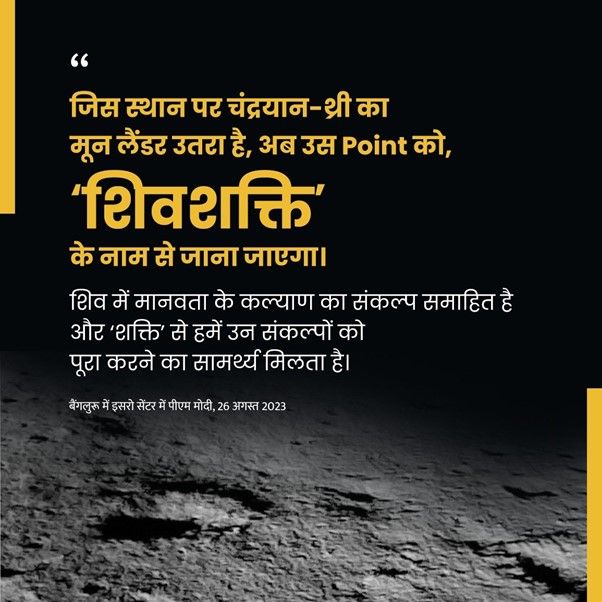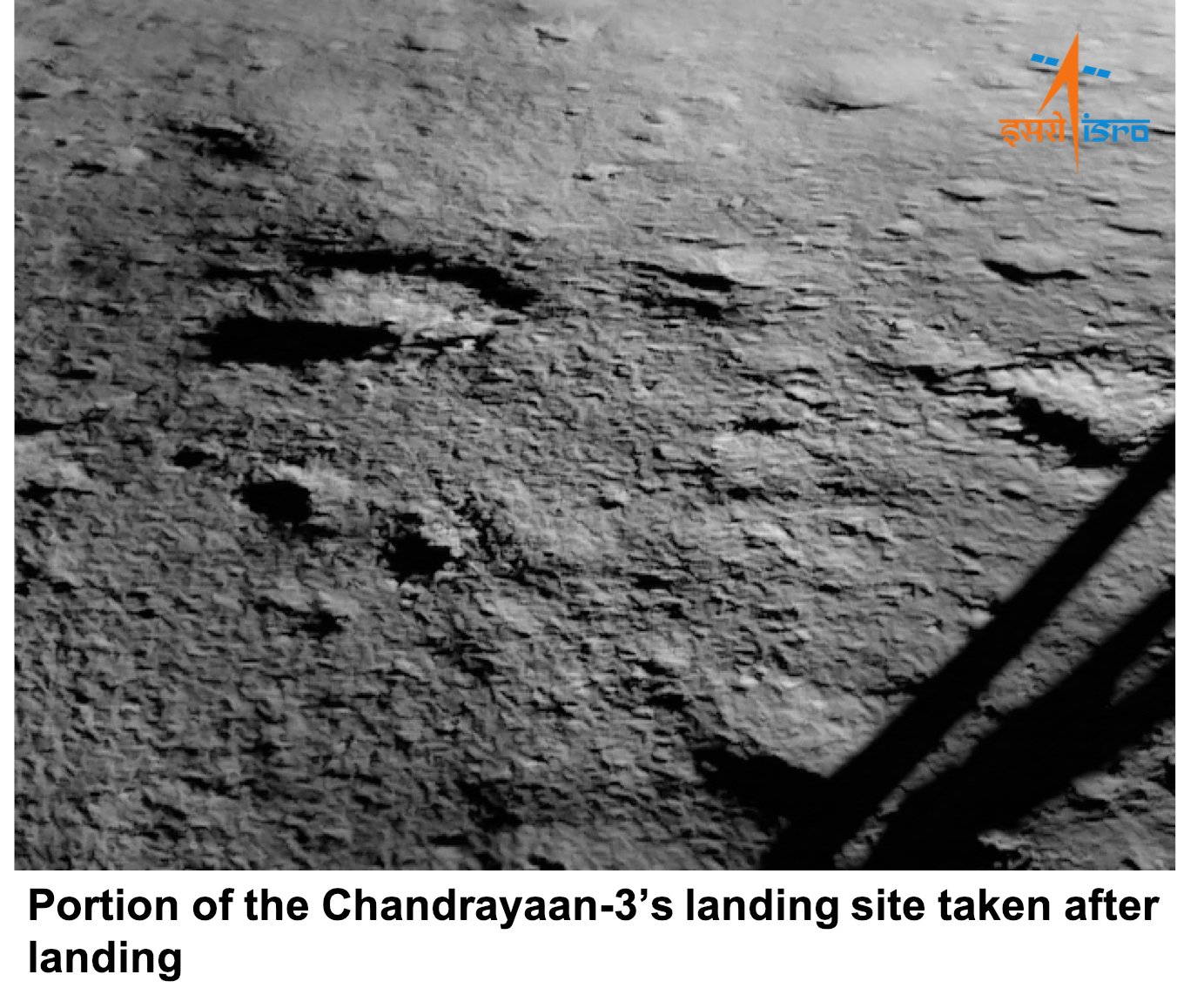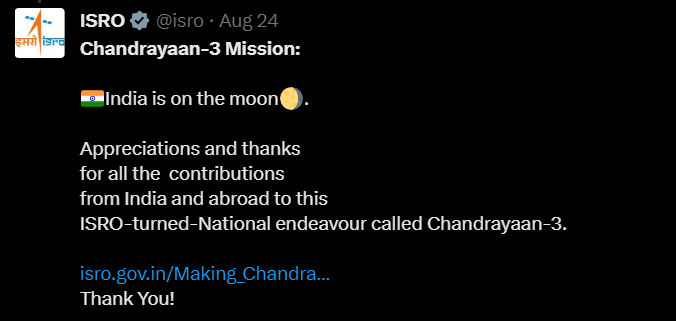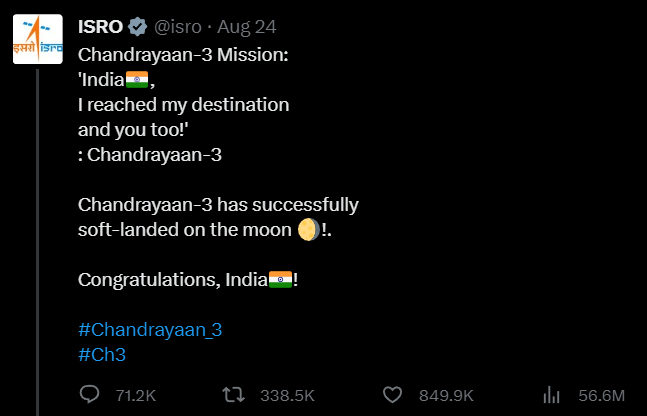In a monumental achievement that reverberated across the world, India has etched its name in lunar history by successfully landing a rover on the enigmatic South Pole of the Moon. This remarkable feat not only solidifies India’s status as a pioneer in space exploration but also showcases its burgeoning technological prowess. As the fourth country ever to land on the Moon, followed by Soviet Union in 1959, USA in 1962, China in 2013, and the first to touch down at its uncharted southern extremity, India’s accomplishment is a testament to human ingenuity and perseverance.
The Indian Space Research Organisation (ISRO), known for its exceptional precision and innovative techniques, meticulously executed the Chandrayaan-3 mission, setting a new bar for lunar exploration. The endeavour began with a flawless launch on 14th July 2023 from Sriharikota, followed by a meticulous journey across hundreds of thousands of kilometers to reach the Moon’s vicinity on 5th Aug 2023. The final phase, the landing by Lander Vikram and the Rover Pragyan, required a delicate interplay of cutting-edge engineering and unprecedented precision on 23rd Aug 2023.
The challenges of landing at the Moon’s South Pole cannot be overstated. The rugged terrain, craters, and the perpetually shadowed regions posed a series of obstacles that demanded inventive solutions. ISRO’s engineers and scientists displayed unparalleled mastery in designing a lander that could navigate and land safely amid these challenges. The use of advanced autonomous navigation systems allowed real-time decision-making and ensured that the rover’s descent was both controlled and responsive to the ever-changing conditions on the lunar surface.
The rover’s successful touchdown on the lunar soil is a culmination of years of tireless dedication, meticulous planning, and meticulous attention to detail. It is a moment that will undoubtedly inspire generations to come. The Chandrayaan-3 mission not only reinforces India’s position as a leader in space exploration but also signifies the collaborative efforts of countless experts and organisations across the nation who pushed the boundaries of science and technology.
Moreover, India’s achievement is a pivotal step toward unravelling the mysteries of the Moon’s unexplored regions. The South Pole, in particular, holds the promise of invaluable scientific discoveries, including insights into the Moon’s geological history and potentially significant resources. The successful landing opens up avenues for deeper research into the Moon’s composition, its water ice deposits, and its potential as a platform for future space missions.
This triumph arrives as a comforting balm, gently soothing the memory of Chandrayaan-2’s partial setback, a moment etched with emotion when Dr. K Sivan, then ISRO Chairman, found solace in the consoling presence of PM Narendra Modi.
In recognition of India’s historic feat of landing a rover on the South Pole of the Moon, the touchdown site on the Moon is called Shivshakti point and August 23rd is declared National Space Day, by Prime Minister Modi. As India boldly strides forward in its celestial pursuits, the global community watches with boundless wonder and eager anticipation, fully aware that the frontiers of human accomplishment are ever-expanding. Fuelled by the unquenchable flames of discovery and the unwavering spirit of exploration, we stand on the precipice of the future, eagerly awaiting the impending marvels on the horizon: the coronagraphy spacecraft Aditya-L1, set to grace the cosmos in September 2023, and the monumental Gaganyaan, India’s inaugural human spacecraft mission, slated for late 2024. These forthcoming endeavours are poised to etch new chapters in the annals of space exploration, propelling humanity to unprecedented heights of knowledge and adventure.
About the Author:
Dr. Vinay Karanam is a distinguished and acclaimed Chartered Engineering Scientist, holding numerous prestigious awards to his name. Presently serving as the Principal Engineering Scientist at ‘I Want to Change the World Limited’, an avant-garde consultancy firm at the forefront of advocating climate change resilience, waste-to-energy initiatives, renewable energy solutions, carbon accounting, decarbonisation efforts, and sustainable resolutions. Dr. Karanam is also National Secretary for the Mechanical Engineering Group at Engineering New Zealand and a Fellow of Institute of Managers and Leaders showcasing his commitment to professional excellence and leadership. In the past Dr. Karanam served as a Senior Scientist at the Bhabha Atomic Research Centre, a part of the Department of Atomic Energy under the Government of India.





